Tag: oral history
Sign up for the 2023 Oral History Center Educational Programs
The Oral History Center is pleased to announce that applications are open for the 2023 Introductory Workshop and Advanced Institute!
Introductory Workshop: Friday, March 3 [this event has passed]
Advanced Institute: M–F, August 7–11 [applications are now closed]The OHC is offering online versions of our educational programs again this year
Introductory Workshop: Friday, March 3, 8:30 a.m.–2:30.p.m., via Zoom
This event has passed, but we’d love to see you in 2024. Sign up for our newsletter to find out the date as soon as it’s decided.
The 2023 Introduction to Oral History Workshop will be held via Zoom on Friday, March 3, from 8:30 a.m.–2:30 p.m. Pacific Time, with breaks woven in. Applications are now being accepted on a rolling basis. Please apply early, as spots fill up quickly.
Apply here.
This workshop is designed for people who are interested in an introduction to the basic practice of oral history and learning best practices. The workshop serves as a companion to our more in-depth Advanced Oral History Summer Institute held in August.
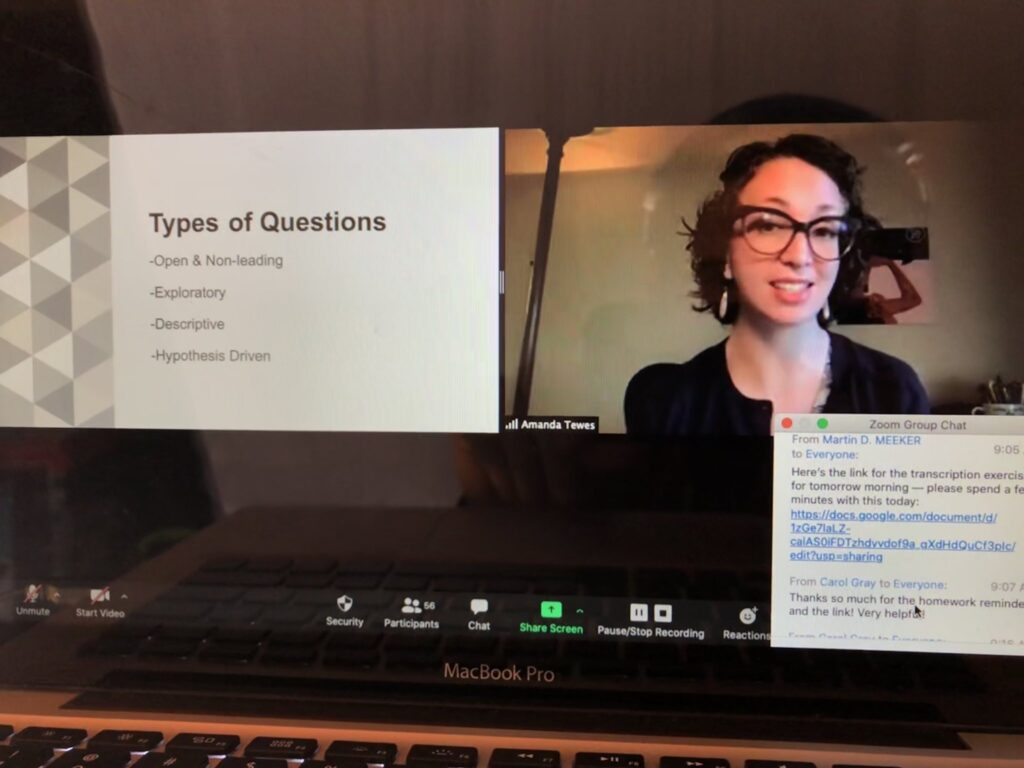
This workshop focuses on the “nuts-and-bolts” of oral history, including methodology and ethics, practice, and recording. It will be taught by our seasoned oral historians and include hands-on practice exercises. Everyone is welcome to attend the workshop. Prior attendees have included community-based historians, teachers, genealogists, public historians, and students in college or graduate school.
Tuition is $150. We are offering a limited number of participants a discounted tuition of $75 for students, independent scholars, or those experiencing financial hardship. If you would like to apply for discounted tuition, please indicate this on your application form and we will send you more information. Please note that the OHC is a soft money research office of the university, and as such receives precious little state funding. Therefore, it is necessary that this educational initiative be a self-funding program. Unfortunately, we are unable to provide financial assistance to participants other than our limited number of scholarships. We encourage you to check in with your home institutions about financial assistance; in the past we have found that many programs have budgets to help underwrite some of the costs associated with attendance. We will provide receipts and certificates of completion as required for reimbursement.
Applications are accepted on a rolling basis. We encourage you to apply early, as spots fill up quickly.
If you have specific questions, please contact Shanna Farrell at sfarrell@library.berkeley.edu.
Advanced Institute: M–F, August 7–11, 8:30 a.m.–2 p.m., via Zoom
Applications are now closed, but we’d love to see you in 2024. Sign up for our newsletter to find out the date as soon as it’s decided.
About the Institute
The Oral History Center is offering a virtual version of our one-week advanced institute on the methodology, theory, and practice of oral history. This will take place from August 7–11, 2023. The Advanced Institute will be held online.
The cost of the Advanced Institute has been adjusted to reflect the online nature of this year’s program. Tuition is $600. See below for more details.
The institute is designed for graduate students, postdoctoral fellows, university faculty, independent scholars, and museum and community-based historians who are engaged in oral history work. The goal of the institute is to strengthen the ability of its participants to conduct research-focused interviews and to consider special characteristics of interviews as historical evidence in a rigorous academic environment.
We ask that applicants have a project in mind that they would like to workshop during the week. All participants are required to attend small daily breakout groups in which they will workshop projects.
In the sessions, we will devote particular attention to how oral history interviews can broaden and deepen historical interpretation situated within contemporary discussions of history, subjectivity, memory, and memoir.
Apply here.
Overview of the Week
The institute is structured around the life cycle of an interview. Each day will focus on a component of the interview, including foundational aspects of oral history, project conceptualization, the interview itself, analytic and interpretive strategies, and research presentation and dissemination.
Instruction will take place online from 8:30 a.m.–2 p.m. Pacific Time, with breaks woven in. There will be three sessions a day: two seminar sessions and a workshop. Seminars will cover oral history theory, legal and ethical issues, project planning, oral history and the audience, anatomy of an interview, editing, fundraising, and analysis and presentation. During workshops, participants will work throughout the week in small groups, led by faculty, to develop and refine their projects.
Participants will be provided with a resource packet that includes a reader, contact information, and supplemental resources. These resources will be made available electronically prior to the Institute, along with the schedule.
Applications and Cost
The cost of the institute is $600. We are offering a limited number of participants a discounted tuition of $300 for students, independent scholars, or those experiencing financial hardship. If you would like to apply for discounted tuition, please indicate this on your application form and we will send you more information.
Please note that the OHC is a soft money research office of the university, and as such receives precious little state funding. Therefore, it is necessary that this educational initiative be a self-funding program. Unfortunately, we are unable to provide financial assistance to participants other than our limited number of scholarships. We encourage you to check in with your home institutions about financial assistance; in the past we have found that many programs have budgets to help underwrite some of the costs associated with attendance. We will provide receipts and certificates of completion as required for reimbursement.
Applications are accepted on a rolling basis. We encourage you to apply early, as spots fill up quickly.
Questions?
Please contact Shanna Farrell at sfarrell@library.berkeley.edu with any questions.
About the Oral History Center
The Oral History Center of The Bancroft Library at UC Berkeley preserves voices of people from all walks of life, with varying political perspectives, national origins, and ethnic backgrounds. We are committed to open access and our oral histories and interpretive materials are available online at no cost to scholars and the public. Sign up for our monthly newsletter featuring think pieces, new releases, podcasts, Q&As, and everything oral history. Access the most recent articles from our home page.
Heavy hitters: the modern era of athletics management at UC Berkeley
By William Cooke
The last fifty years might be considered the modern era of intercollegiate athletics management in the United States. Ballooning TV contracts and Title IX have changed the college athletics landscape forever. The growing pains associated with those changes were felt by everyone involved with college sports, including those at UC Berkeley. The Oral History Center’s project, Oral Histories on the Management of Intercollegiate Athletics at UC Berkeley: 1960–2014, offers cross-sections of the Cal Athletics world during those formative years in the form of interviews with key internal and external actors.
For college sports fans, the history of the management of collegiate athletics at UC Berkeley is a familiar one. The unending conflict between maintaining a solid academic reputation and fostering winning programs, funding dilemmas, NCAA sanctions and the challenges surrounding gender inclusion in sports — common issues for every university athletic department — are all included in UC Berkeley’s storied athletics history.
These tensions and developments are reflected in the UC Berkeley Oral History Center’s project, Oral Histories on the Management of Intercollegiate Athletics at UC Berkeley: 1960–2014. Interviews between former UC Berkeley Associate Chancellor John Cummins — who served as interviewer — and a diverse cross sampling of individuals involved in the management of intercollegiate athletics, including athletic directors, chancellors, donors, and senior administrators, make up this collection of 45 publicly released interviews.
Organized by decade, here are a few snippets of the voices represented in this collection of oral histories. Themes in this collection include but are not limited to funding dilemmas, controversies surrounding academic standards for student-athletes, the evolving relationship between women’s and men’s sports, and the sometimes incompatible interests of athletic boosters and University officials.
The 1970s: The beginning of the modern era — Dave Maggard and Luella Lilly
The 40s and 50s were the golden years of Cal football and basketball. Led by legendary head coach Lynn “Pappy” Waldorf, Cal’s football program made three Rose Bowl appearances between 1948 and 1950. In 1959, head basketball coach Pete Newell led Cal to the program’s lone national championship to date.
A relatively disappointing decade followed for both programs. Then, in the early 1970s, catastrophe. When the NCAA found out that football and track athlete Isaac Curtis had failed to take the SAT as required, the intercollegiate governing body came down hard with sanctions.
Dave Maggard, who was appointed Athletic Director in 1972, argued against those in the administration and around Cal Athletics who wanted to fight the sanctions. These included the Golden Bear Athletic Association, an independent booster organization that had sued the NCAA in response to the sanctions. According to Maggard in his oral history:
When I became the athletic director I went to the administration and said, “This is a huge mistake. You cannot fight these people. We need to work to get on the inside, we need to get on committees, we need to be a part of the NCAA. I will tell you that they will rip this place apart, and this is something that you will never win. You will never win.”
The sanctions included probation and four years of bowl game ineligibility, a blow to the revenue stream of Cal’s most profitable program. Thanks to Maggard’s cooperation with the NCAA, though, the sanctions were eventually lifted.
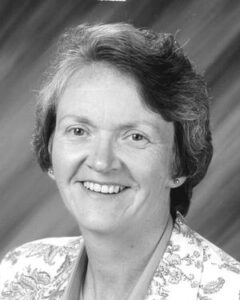
At the same time, intercollegiate athletics at UC Berkeley took a huge step towards achieving gender equity in sports at the University. Following the passage of Title IX in 1972, the University hired its first director of Women’s Intercollegiate Athletics, Luella “Lue” Lilly.
Generating revenue for women’s athletics was a difficult undertaking. But Lilly made it a priority and found creative ways to raise funds and boost support for the newly established programs. Those efforts included the recruitment of a local politician and an Olympic gold medalist.
Then one time when we had— Dianne Feinstein and Ann Curtis were going to help us with the Mercedes raffle that we were giving out… We went over in front of city hall, and we just drove. We looked to see what was going to make the best picture, and there was a fountain behind it. We just drove the thing right up on the sidewalk.
If the 1970s was an era of immense change in athletics management at UC Berkeley, the next two decades would see the University settle its position on the relative importance of athletics and academics.
The 1980s and 1990s: The balance between school and sports — Chancellors Ira Michael Heyman, Chang-Lin Tien
When Chancellor Ira Michael Heyman took the reins from Albert Bowker in 1980, he inherited a sound athletics fundraising plan that Maggard had developed the decade prior. In many ways, Heyman supported the success of athletics at Cal, going so far as to allow “Blue Chip Admits” — 20 student athletes per year who would not normally be eligible to attend UC Berkeley.

But even while supporting athletic success at the calculated expense of lower academic standards, Heyman did not avoid criticism from UC Berkeley athletics boosters:
So they [The Grid Club] kept pushing me. “How important is athletics to you in relation to academics?” et cetera, et cetera. And I essentially said, “Academics, they’re really important. And intercollegiate athletics are of importance.” I just tried to make that distinction. And they said, “Well, on an index of one to ten where do athletics stand?” And I said, “Oh, about seven. Six and a half or seven.” That group never really warmed up to me.
In the early 1990s, Earl “Budd” Cheit, who served as the dean of the Haas School of Business, Executive Vice Chancellor and Interim Athletic Director over the course of his time at UC Berkeley, found himself right in the middle of that ongoing tension between winning and maintaining the University’s reputation for being first and foremost an elite academic institution.
Head football coach Bruce Snyder had led the Bears to a 10-2 season and a trip to the Citrus Bowl in 1991. Arizona State University doubled UC Berkeley’s annual salary offer of $250,000 to recruit Snyder.
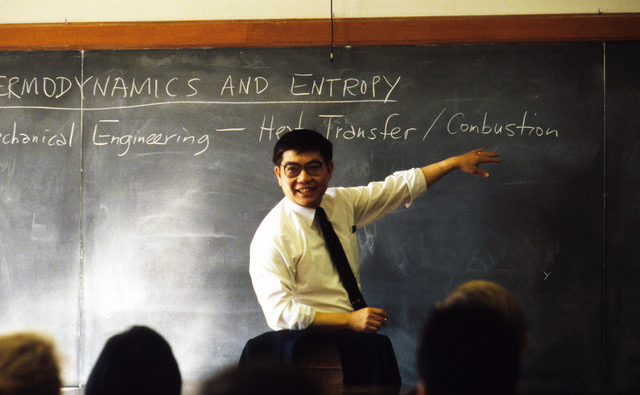
Long-time supporter of UC Berkeley athletics Walter “Wally” Haas offered to match ASU’s offer along with the help of other boosters. But when Cheit relayed Haas’s message to Chancellor Chang-Lin Tien, the Chancellor shot the idea down and explained his reasoning.
Wally Haas called me during this time, and he said, “There are a number of people, myself included, who will come up with the money to match what he’s being offered. Will the Chancellor go for that?” And I called Chang-Lin and talked to him. And Chang-Lin said, “I can’t justify paying a coach that much more than the highest-paid professor on the campus.”
The 21st century: Changing priorities — Robert Berdahl, Robert Birgeneau
The 80s and 90s saw proponents of academic integrity and responsible spending win out over those who wanted Cal Athletics to accept the national shift toward a culture of commercialism in intercollegiate sports. The potential to rake in huge revenues from TV deals by investing in “revenue athletes” — student-athletes on the football and men’s basketball teams — drove the impetus to sacrifice academic standards for athletic success.
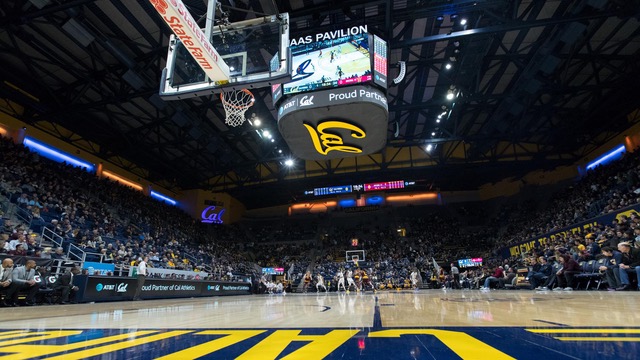
The hiring of Athletic Director Steven Gladstone in 2001 marked the beginning of a short, half-hearted effort to spend money in order to make money. Under Gladstone’s direction, coaching and administrative salaries were increased to attract and retain the very best in the intercollegiate athletics industry, all in the hope of making the two revenue sports — Cal football and men’s basketball — into elite college programs.
But with higher spending came concerns about the growing athletics budget deficit, which was compounded by the ever-growing cost of the newly built Haas Pavilion. In his interview with Cummins, Robert Berdahl, UC Berkeley’s Chancellor between 1997 and 2004, attributes some of the blame for deficit spending on the 1991 Smelser Report, which called for broad-based, highly competitive athletic programs in spite of budget constraints.
I think that the Smelser Report was a real disservice, because it created in the donor and booster community the notion we’re going to be as excellent in athletics as we are in academics, which I think is an unrealistic expectation for any high-quality university. I don’t think there’s any university of high quality that has that aspiration. Maybe Stanford, maybe Stanford’s the only one that does… But they don’t—they are competitive in football and basketball but rarely go to the Rose Bowl or to the NCAA championship.

Robert Birgeneau, who succeeded Berdahl as Chancellor, saw to it that priorities change under his leadership. To the dismay of some donors, Birgeneau replaced Gladstone with Athletic Director Sandy Barbour in 2004. During her tenure, Barbour facilitated the creation of the University Athletics Board (UAB), a committee that included faculty members and student athletes. Its purpose was to increase transparency in athletics spending by sharing this information with faculty for the very first time.
The Great Recession of 2008 made budget constraints even tighter. In 2010, Birgeneau made the difficult and controversial decision to cut four athletics programs — baseball, men’s and women’s gymnastics, and women’s lacrosse — and make rugby a club sport.
Because we had such loyal supporters of [Division] IA sports, I felt that they needed to know that the financial situation really was quite dire and that we needed them to step up, both themselves personally and to organize fundraising campaigns. As I said, that just simply did not happen… So, in this fateful September meeting, after the cold hard financial facts were presented to me, I agreed with the financial and IA people, that there really was not any choice. Specifically, we were never going to be able to achieve our goal of $5-million-a-year support from the campus without eliminating sports.
Supporters of those four sports eventually raised a combined $20 million in order to restore them to Division I status.
We worked out a compromise, basically asking each sport to raise enough funds to close their operating gaps for the next five to seven years… The baseball supporters raised nearly $10 million in six weeks. It is notable that philanthropy to baseball had been negligible for many, many years, and so there was a qualitative change. Indeed, this funding crisis brought the baseball community together, and in fact has resulted in us now having a stadium with lights at night. Thus, for baseball the situation actually is markedly improved.
These quotes represent just a small fraction of what this collection has to offer. Researchers will also find information on intra-departmental relationships, the personal experiences of former administrators in regards to particular decisions, and the retrospective opinions of both external and internal actors in the most crucial formative decades in the history of intercollegiate athletics management, both at UC Berkeley and institutions across the country.
Find these interviews and all our oral histories from the search feature on our home page. You can search by name, keyword, and several other criteria.
William Cooke is a fourth-year undergraduate student majoring in Political Science and minoring in History. In addition to working as a student editor for the Oral History Center, he is a reporter in the Sports department at UC Berkeley’s independent student newspaper, The Daily Californian.
Related Resources from The Bancroft Library
In addition to these oral histories, The Bancroft Library has related sources on Cal Athletics and intercollegiate athletics management more generally, including books on athletics facilities and fundraising, department records, and newspaper articles.
Read “Title IX in Practice: How Title IX Affected Women’s Athletics at UC Berkeley and Beyond,” also by William Cooke.
Related oral histories include Brutus Hamilton, Student athletics and the voluntary discipline : oral history transcript / and related material, 1966-1967 and Peter F. Newell, UC Berkeley athletics and a life in basketball.
66 years on the California gridiron, 1882-1948; the history of football at the University of California. Brodie, S. Dan. 1949. Bancroft BANC F870.A96 B7
A celebration of excellence : 25 years of Cal women’s athletics. Compiled by Kevin Lilley, Lisa Iancin, and Chris Downey. UC Archives Folio ; 308m.p415.c.2001.
Pamphlets on athletics in California. Bancroft Pamphlet Double Folio ; pff F870.A96 P16.
About the Oral History Center
The Oral History Center of The Bancroft Library preserves voices of people from all walks of life, with varying political perspectives, national origins, and ethnic backgrounds. We are committed to open access and our oral histories and interpretive materials are available online at no cost to scholars and the public. Sign up for our monthly newsletter featuring think pieces, new releases, podcasts, Q&As, and everything oral history. Access the most recent articles from our home page.
Remembering Julie Shearer, oral historian
By Ann Lage
Oral history interviewer (retired)
November 2022
Julie Gordon Shearer, an esteemed former colleague from the days when the Oral History Center was known as the Regional Oral History Office, passed away in August 2022.
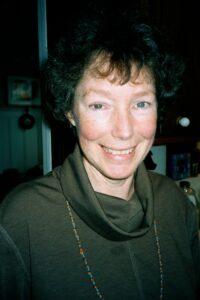
Julie joined the ROHO staff in 1978, as the office was ramping up its second large-scale project documenting California’s political leadership. Having completed a comprehensive project on California governance during the years of Earl Warren’s gubernatorial administration, the office was now beginning to document the Goodwin Knight and Edmund “Pat” Brown administrations. Julie brought to the project an academic background in political science, relevant work experience as a journalist for the Mill Valley Record and as editor at UC’s Agricultural Extension, as well as personal experience as an environmental activist, most notably in the battle to prevent the building of a nuclear power plant at Bodega Head.
Julie’s interview subjects on the Knight-Brown project illustrate the breadth of the project’s scope, as well as Julie’s skill in connecting with diverse narrators. Her lengthy interview with Bernice Layne Brown focused on life in the governor’s mansion and the supporting role played by political spouses at the time, but Julie’s careful coaxing also elicited Mrs. Brown’s insights on the personal impacts of the governor’s difficult decisions, as in the Caryl Chessman capital punishment case. Others she interviewed included former Los Angeles Mayor Sam Yorty, who had opposed Pat Brown in the 1966 Democratic Party primary, and Helen Nelson, a pioneering consumer advocate and Brown’s appointee as California’s first Consumer Counsel.
In the early 1980s, ROHO’s political team launched its next major project, interviewing key figures in the Ronald Reagan gubernatorial administration, along with legislative leaders, political opponents, and community activists. Julie contributed numerous interviews to the Reagan project, delving into issues as broad as parent advocacy for children with intellectual disabilities, criminal justice issues, and tax reduction efforts of the Reagan governor’s office.
Following completion of the Reagan project, Julie was on the ROHO team for the California State Archives State Government Oral History program, interviewing several legislators and agency administrators.
In the summer of 1985, Julie had a leading role in an innovative oral history project. Berkeley Chancellor Michael Heyman asked ROHO to conduct interviews examining how the campus managed the recent student protests demanding the university’s divestment from the South African apartheid regime. Sixteen interviews were conducted with campus officials and police officers, intended not only for the historical record but also for current and future campus administrators tasked with managing freedom of speech and assembly issues. The interviews were for internal use until their publication in 2013 as Six Weeks in Spring: Managing Protest at a Public University.
Highlights of Julie’s contributions in the 1990s include two gems: an extensive, two-volume oral history with Sidney Roger, A Liberal Journalist on the Air and on the Waterfront: Labor and Political Issues, 1932–1990; and a deep dive into the lives of S.I. Hayakawa and his wife, Margedant, in From Semantics to the U.S. Senate, ETC., ETC. Hayakawa was a noted semanticist, a controversial president of San Francisco State College during a turbulent period of Vietnam War protests, and a one-term U.S. Senator from California.
After more than two decades with ROHO, Julie retired, turning her attention to her first love, music performance and composition. Julie Gordon Shearer will be remembered not only for her many contributions to the oral history archive, but also for her remarkable personal qualities, her openness and joy in life, her gift for friendship, and her warm relationships with her interviewees as well as ROHO colleagues.
You can find the interviews mentioned here and all of the Oral History Center’s interviews from the search feature on our home page.
Ann Lage conducted oral histories for the Oral History Center (previously called the Regional Oral History Office, or ROHO) from 1978–2013, on topics including natural resources and land use, the environmental movement, California political and social history, and the University of California. She was director of projects on the Sierra Club, the Disability Rights and Independent Living Movement, the Department of History at UC Berkeley, the University of California Office of the President, and Saving Point Reyes National Seashore. In the 1990s, she was deputy director of ROHO and then served as acting director following Willa Baum’s retirement. She holds a BA and MA in history from Berkeley.
Richard Mendelson, “A Life Lived on the Steep Part of the Learning Curve: Richard Mendelson on Wine Law and History”
by Martin Meeker
Oral History Center Interviewer (retired)
“When we drink a glass of wine, we may enjoy its aromas, consider where it is from, and ideally, care about how it was made and who created it. We might think about the winemaker, along with the vineyard and winery team, and perhaps the brand owner. We most likely don’t consider the people beyond that circle who also play a role in a wine’s existence, ensuring its authenticity, making it more meaningful for consumers, and meanwhile, protecting some of the most sacred places to grow grapes and create wine. For those who are reading this, you are about to meet such a person, one of the most exceptional people in the wine world, and someone who has more passions and layers than the most complex glass of wine you have ever enjoyed,” Linda Reiff, President and CEO of Napa Valley Vintners.
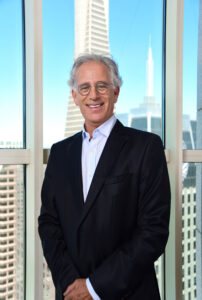
Richard Mendelson is in fact the person about whom Linda Reiff writes, and the Oral History Center is pleased to release this major life history interview with the man. Mendelson is an attorney who has played a pivotal role in creating the field of wine law through his legal practice, historical research and writing, and international leadership on the issue over the past four decades. Moreover, he is a Lecturer in Wine Law at UC Berkeley, School of Law, where he directs the Program on Wine Law and Policy. He also lectures on a variety of vineyard and wine law topics at UC Davis Graduate School of Management and has taught at the University of Aix-Marseille and the University of Bordeaux.
A graduate of Harvard University, Oxford University, and Stanford Law School, Mendelson has handled legal matters involving almost every aspect of the wine business, including liquor licensing, environmental challenges to vineyard development, grape purchase agreements, winery use permits, representation of winery clients before the California Department of Alcoholic Beverage Control and federal Alcohol & Tobacco Tax and Trade Bureau, state and federal label approvals, distributor appointments and terminations, and import-export contracts. Mendelson has a special expertise in geographical indications and has been responsible for obtaining recognition for some of the most well-known American Viticultural Areas. He assisted the California legislature with the drafting of legislation to protect the world-famous Napa Valley geographical indication. Subsequently, he successfully defended that law on behalf of the Napa Valley Vintners in the case of Bronco v. Jolly, which he argued before the California Supreme Court. Of his legal work, famed vintner Bill Harlan writes, “His legal mind, business judgment, negotiating skills, discipline, and commitment to his clients are first rate. With great integrity and knowledge and an abiding commitment to be fair and clear, he is able to gain the respect of all parties in practically any setting.”
This oral history is a globe-trotting one, with meaningful stops in England, France, India, and China, but the focus here, as with Mendelson’s work, is California’s Napa Valley. According to Harlan, Mendelson serves “as Napa Valley’s unofficial ambassador, he truly upholds our agricultural heritage and promotes our special place in the world of wine.” Linda Reiff, head of the Napa Valley Vintners, writes, “He helped make Napa Valley one of the most iconic wine regions in the world by mastering groundbreaking initiatives and complex legal challenges. He authors, refines and defends regulations to protect consumers and to ensure a more sustainable wine industry. He is a thinker and a problem solver, a deal maker, a broker.” This oral history goes a long way to explain how over the course of a few short decades “Napa Valley” came to signify and to exemplify environmental stewardship, preservation of agricultural resources, American ingenuity and achievement internationally, and, of course, quality wine.
In this interview, moreover, Mendelson discusses his family’s heritage and his own upbringing in Jacksonville, Florida; his early employment on Capitol Hill; and his attendance at Harvard University, Stanford University, and Oxford University, where he first became enamored with wine in Magdalen College’s wine cellar. Mendelson goes on to discuss his career in wine and wine law, beginning with Bouchard Aîné in Burgundy, France, and continuing in America with the establishment of American Viticultural Areas (AVAs). Other topics discussed in the interview include the research and writing of his books (From Demon to Darling, Law in America: Law and Policy, Spirit in Metal, and Appellation Napa Valley: Building and Protecting an American Treasure), California cannabis law, yoga, tai chi, Hinduism, artistic sculpture and metalwork, and wine law instruction.
Find this interview and all our oral histories from the search feature on our home page. You can search by name, keyword, and several other criteria.
About the Oral History Center
The Oral History Center of The Bancroft Library preserves voices of people from all walks of life, with varying political perspectives, national origins, and ethnic backgrounds. We are committed to open access and our oral histories and interpretive materials are available online at no cost to scholars and the public. You can find our oral histories from the search feature on our home page. Search by name, keyword, and several other criteria. Sign up for our monthly newsletter featuring think pieces, new releases, podcasts, Q&As, and everything oral history. Access the most recent articles from our home page or go straight to our blog home.
Hon. Loni Hancock: Member of the California State Senate, December 2008-November 2016

In spring 2021, I had the pleasure of interviewing the Hon. Loni Hancock for the California State Archives State Government Oral History Program. As an interviewer, one of my major areas of interest is the history of women’s political work, and Loni Hancock’s name appears over and over in the course of this study. Indeed, her life and work are integral to understanding California’s recent political history and the greater inclusion of women in elected office.
Loni Hancock is a former California State Senator (2008-2016), California State Assemblymember (2002-2008), Mayor of Berkeley (1986-1994), and Berkeley City Councilmember (1971-1979). Hancock was born in 1940 in Chicago, Illinois, and grew up in New York City. She attended Antioch College, Cornell College, and graduated with a BA from Ithaca College in 1963. Hancock later earned a MA from the Wright Institute in 1978. In addition to serving in elected office as a Democrat, Hancock also previously worked as the regional director for ACTION in the Carter administration, the director of the Shalan Foundation, and headed the Western Regional Office of the Department of Education in the Clinton administration. She currently partners with East Bay Supportive Housing Collaborative to advocate for supportive housing for people with serious mental illnesses, and is working to preserve Berkeley’s architectural heritage.
Hancock moved to Berkeley, California, in 1964 amidst the community’s reckoning with school desegregation and the Free Speech Movement. This zeitgeist in 1960s Berkeley inspired Hancock to follow her own interests in political activism. Indeed, it was her involvement in the local peace movement that propelled her into electoral politics. In her interview, Hancock explained, “Berkeley is a place where things begin. And whatever is in the air here has, I think, encouraged us to be standing up for what we believe is right, and arguing it out among ourselves.”
After an unsuccessful first campaign in 1969, Hancock won election to Berkeley City Council in 1971. For a time, she was the only woman on this governing body. Hear Hancock reflect on gendered expectations for Berkeley City Councilmembers in the 1970s:
After her time as Mayor of Berkeley, as well as work in several Democratic administrations and nonprofits, Hancock felt she could continue to contribute to her community by running for legislative office—first as a California State Assemblymember and then as a California State Senator. During her time in the California Legislature (2002-2008, 2008-2016), Hancock worked on many important issues. Notably, she was a major proponent of environmental legislation. Hancock introduced SCA-5 (later approved by voters as Proposition 25), which proposed passage of state budgets with a simple majority vote rule. She also advocated for criminal justice reform, including funding for prison education programs. Of this work, Hancock explained,
“One of the things we did was get a lot of prison education funded and implemented and get more money for rehabilitation programs. And actually, one of my best bills that was a my-idea bill was we gave full reimbursement for community colleges in California to run transfer-level courses in our state prisons. The idea being that you would get your basic first two years of college done, and then you could transfer to a UC or CSU on release…The recidivism rate goes down to virtually zero when that happens, so anyway, it makes safer communities, is what it does.”
Hancock’s legislative contributions have certainly helped shape recent California politics. But as the California State Legislature still struggles with gender parity of elected officials, her presence and perspectives as a woman in both bodies have also been key. In thinking about the strides toward greater representation of women in California politics, Hancock reflected,
“Well, we had our first woman speaker [in the Assembly], Karen Bass. We had our second woman speaker, Toni Atkins, who’s now the [Senate] pro tem. Those were milestones, really important milestones. You know, also, Karen was the first woman of color, and I’m guessing that Toni might be the first LGBTQ woman as a head [in California State government]…so you have women in leadership, which I think makes an interesting difference, and more women…So you know, there’s definitely progress, definitely.”
And Hancock’s tenure in California politics has certainly been a part of this progress. Read Loni Hancock’s oral history interview to learn more about her life and work in California politics!
Find this interview and all our oral histories from the search feature on our home page. You can search by name, keyword, and several other criteria.
About the Oral History Center
The Oral History Center of The Bancroft Library has interviews on just about every topic imaginable. You can find the interviews mentioned here and all our oral histories from the search feature on our home page. Search by name, keyword, and several other criteria. We preserve voices of people from all walks of life, with varying political perspectives, national origins, and ethnic backgrounds. We are committed to open access and our oral histories and interpretive materials are available online at no cost to scholars and the public.
Sign up for our monthly newsletter featuring think pieces, new releases, podcasts, Q&As, and everything oral history. Access the most recent articles from our home page or go straight to our blog home.
Virtual and in-person discussion on ethics in archiving
The UC Berkeley Oral History Center is proud to host a talk by oral historian Venkat Srinivasan, an alumnus of the 2014 Advanced Oral History Institute. Srinivasan invites us to imagine how we might construct a more inclusive, ethical, and accessible oral history archive.
Every archive accession brings with it questions about inclusivity, ethics and privacy. Please join the Oral History Center of The Bancroft Library for a special guest presentation on ethics in the contemporary archive, by Venkat Srinivasan, archivist at the Archives at National Centre for Biological Sciences (NCBS) in Bangalore.
Tuesday, October 25, 11:30 a.m. – 1 p.m. Pacific Time.
In person in The Bancroft Library, Conference Room 267
Or join online via Zoom.
In his talk, “An Act of Imagination: The Archives as Commons,” Venkat Srinivasan—an alumnus of the Oral History Center’s Advanced Oral History Institute from 2014—invites us to imagine how we might construct a more inclusive, ethical, and accessible oral history archive. His presentation will address how questions of inclusivity, ethics and privacy are critical when an archive is just starting out, as is the case with the Archives at NCBS. Through examples from correspondence, oral histories, native digital files, its nascent accession and retention policies, and the challenge of a campus COVID-19 archive, this presentation will address the conflicts and synergies on rights to information, diversity, privacy, and the ethics of a contemporary archive.
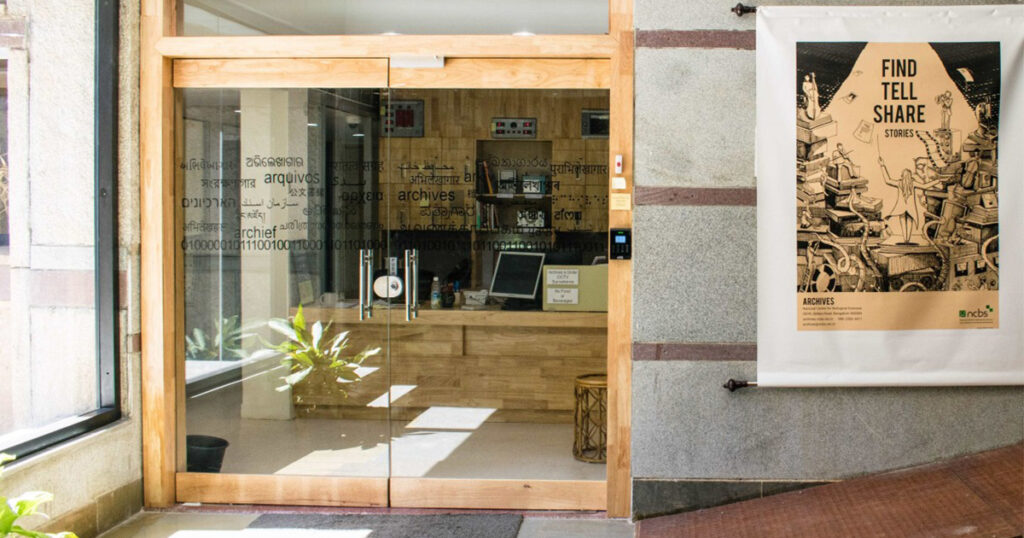
The Archives at NCBS is a public collecting center for the history of science in contemporary India. It opened in 2019 and houses about 150,000 objects spread across 25 collections. The Archives at NCBS has one underlying philosophy: archives enable diverse stories. Through sharing the work that took place in 2020–21, this presentation will discuss four objectives for the archives: strengthening research collections and access in domain areas, pushing the frontiers of research in archival sciences, building capacity and public awareness through education, training and programming, and reimagining the archives as part of the commons. The Archives at NCBS is also part of Milli, a broader collective of individuals and communities interested in the nurturing of archives, and for the public to find, describe and share archival material and stories.
Speaker Biography
Venkat Srinivasan is the archivist at the Archives at NCBS in Bangalore. In addition, he currently serves on the institutional review boards for the archives at IIT Madras, ISI Kolkata, and NID Ahmedabad, and on the board of the Commission on Bibliography and Documentation of the IUHPST (International Union of History and Philosophy of Science and Technology). He is a member of the Encoded Archival Descriptions – Technical Sub-committee (Society of American Archivists), and Committee on the Archives of Science and Technology (CAST) of the ICA Section on Research Institutions (International Council on Archives). He is a life member of the Oral History Association of India (OHAI), and served in an executive role in OHAI between 2020 and 2022. He is a founding member of Milli, a collective of individuals and communities committed to the nurturing of archives. Prior to this, he was a research engineer at the SLAC National Accelerator Laboratory, Stanford University. In addition, he is an independent science writer, with work in The Atlantic and Scientific American online, Nautilus, Aeon, Wired, and the Caravan. He graduated with a Masters in Materials Science from Stanford University (2005), a Masters in Journalism (science) from Columbia University (2009), and a Bachelors in Engineering from the University of Delhi (2003).
In-person directions and Zoom details
Zoom details
Please be sure to sign into a Zoom account (free, institutional, or paid).
Join Zoom Meeting
https://berkeley.zoom.us/j/97008598387
Meeting ID: 970 0859 8387
One tap mobile
+16699006833, 97008598387# US (San Jose)
In-person directions
Through the main entrance of The Bancroft Library, go straight. Once you pass the museum on your right, the Conference Room 267 is the first door on your left. This room is wheelchair accessible.
About the Oral History Center
The Oral History Center of The Bancroft Library preserves voices of people from all walks of life, with varying political perspectives, national origins, and ethnic backgrounds. You can find all our oral histories from the search feature on our home page. Search by name, keyword, and several other criteria. We are committed to open access and our oral histories and interpretive materials are available online at no cost to scholars and the public. Sign up for our monthly newsletter featuring think pieces, new releases, podcasts, Q&As, and everything oral history.
Virtual Discussion with Legendary Lawmakers Loni Hancock, Fran Pavley and Lois Wolk
The California Secretary of State, State Archives & UC Berkeley are holding a Virtual Discussion with Legendary Lawmakers Loni Hancock, Fran Pavley and Lois Wolk on Oct. 18 at 6 pm. This event will launch new oral histories of these celebrated lawmakers to be housed at the California State Archives.
California Secretary of State Shirley N. Weber, Ph.D., and the UC Berkeley Oral History Center will hold a virtual panel discussion and Q&A as The State Archives releases three new oral histories of former state senators Loni Hancock, Fran Pavley, and Lois Wolk.
This virtual event will take place via Zoom from 6–7 pm on Tuesday, October 18. Participants can register and submit questions in advance.
“The leadership and impact of Senators Pavley, Wolk, and Hancock will be felt by Californians for decades to come,” said UC Berkeley Academic Specialist and Historian, Todd Holmes, who interviewed the three women. “Documenting their experience in the legislature for the next generation is exactly what the State Government Oral History Program was created to do. We at the Oral History Center are honored to partner with the State Archives on this important work.”
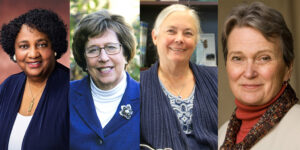
“The California State Government Oral History Program is a critical part of documenting our state’s history and we are pleased to have worked with The UC Berkeley Oral History Center to capture the stories and remarkable accomplishments of the Honorable Loni Hancock, the Honorable Fran Pavley, and the Honorable Lois Wolk,” State Archivist, Tamara Martin said. “We look forward to their interviews and transcripts being available for the public to explore at the California State Archives and on our website.”
“The opportunity for the State Archives to capture the stories of these remarkable lawmakers in our state’s history has been an honor,” Secretary Weber said. “I look forward to the conversations we will be having with three women who have had such a lasting impact on California.”
Since 1986, the California State Archives has administered the Oral History Project, a legislatively established oral history program that has, to date, completed over 200 interviews. This systematic and disciplined effort to record, preserve, and make interviews available supplements the historical records in the Archives and provides researchers with a broader and more complete picture of California government than can be gleaned from documents alone.
About the Oral History Center
The Oral History Center of The Bancroft Library preserves voices of people from all walks of life, with varying political perspectives, national origins, and ethnic backgrounds. You can find all our oral histories from the search feature on our home page. Search by name, keyword, and several other criteria. We are committed to open access and our oral histories and interpretive materials are available online at no cost to scholars and the public. Sign up for our monthly newsletter featuring think pieces, new releases, podcasts, Q&As, and everything oral history.
Announcing the Oral History Center’s new director, Paul Burnett
Congratulations to Paul Burnett!
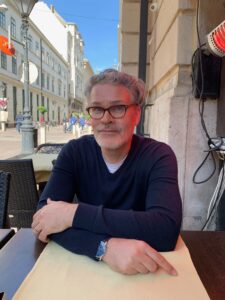
We are pleased to announce that historian Paul Burnett has been appointed the Charles B. Faulhaber director of the Oral History Center following a national search. Paul joined the OHC staff in 2013 and has focused on science, engineering, and UC Berkeley history. He has published a number of academic articles, and has developed and directed large-scale oral history projects on economics, paleontology, Czech physics, the San Francisco Opera, and engineering, among other subjects. Paul has also worked to reach a wider public with a series of online articles for the UC Library blog, a curriculum for high schools on epidemics in history, and podcasts on the early years of the HIV/AIDS epidemic and on the rise of Silicon Valley.
Prior to joining the Oral History Center, Paul was an assistant professor with the Science and Technology Studies Programme at St. Thomas University in New Brunswick, Canada. Before that, Paul researched and produced museum exhibits for the American Philosophical Society in Philadelphia. He completed his PhD at the Department of History and Sociology of Science at the University of Pennsylvania in 2008, where he developed his research on the politics of expertise — how scientists and experts of all kinds establish their credibility, and how people choose between different kinds of expertise to try to solve complex social, political, scientific, and technical problems.
Paul is looking forward to further developing the OHC’s collection, to making the archive’s audio and video more accessible to the public, especially to students in high schools and universities, and to promoting the interpretive work of Center historians.
Please join us in welcoming Paul Burnett to his new role.
Track changes: how BART altered Bay Area politics
By William Cooke
“It was just hooted at, the idea that you’d ever get people out of the automobile. They’d never come to San Francisco if they couldn’t drive into San Francisco.” — Mary Ellen Leary, journalist
“The formation of BART is actually one of the funniest things that ever transpired.”
— George Christopher, Mayor of San Francisco
On September 11, 1972, an estimated 15,000 people rode Bay Area Rapid Transit (BART) on its very first day of operation. The train system, which at that time was a fraction of its current size, has been a vital service to Bay Area commuters for 50 years now. Those with an interest in the history of the Bay Area’s rapid transit system, or regional planning and public transportation more generally, will find a treasure trove of information in the UC Berkeley Oral History Center’s (OHC) archive.
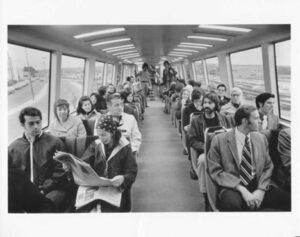
But BART’s development is much more than a history of a public planning project. It is also a history of the evolution of government and of local versus regional power sharing. The OHC houses oral histories from big and small players in California’s public administration throughout the entire 20th century. The voices of politicians, journalists, city planners, and others reveal that BART’s development brought about a whole slew of questions regarding the proper role of government at all levels and required a great deal of reciprocity.
Mary Ellen Leary, a journalist who got her start with San Francisco News, studied and wrote extensively about urban planning and development in the early 1950s. In her oral history “A Journalist’s Perspective: Government and Politics in California,” she speaks at length about the origins of BART, and the broader development of regional agencies designed to meet the transportation needs of suburban areas, not just cities. “I felt then and still feel that the degree of local participation generated for BART from the first planning funds to the final bond issue was an extremely interesting and important political development.”
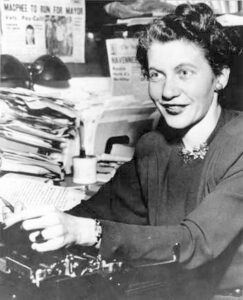
Leary says the impetus to begin work on a regional transit system originated in concerns about traffic congestion in the Bay Area. At the time, however, the idea of an alternative to driving in San Francisco seemed absurd. After all, BART would become the first new regional transit system built in the U.S. in 65 years.
But this worry about compact little San Francisco and the automobile launched this idea about rapid transit. And I laugh now about everybody giving BART such a hard time. It was just hooted at, the idea that you’d ever get people out of the automobile. They’d never come to San Francisco if they couldn’t drive into San Francisco.
According to Leary, local businessman Cyril Magnin and San Francisco Supervisor Marvin Lewis were among the first to consider the benefits of investing in a public transit system instead of parking garages. Unlike Los Angeles, the Bay Area could not build enough parking lots and garages to meet the needs of a car-reliant city due to limited space. Leary observes:
At any rate, they got a group of some business people to take seriously the idea of “How is San Francisco going to endure the flood of traffic that’s already coming in from the Golden Gate Bridge and the Bay Bridge? We can’t possibly do it.” The figures were coming out about what percentage of downtown Los Angeles was given over to automobile parking, most of it on the surface. They hadn’t yet begun many multiple-level parking facilities.
Eventually three counties — San Francisco, Alameda, and Contra Costa — committed to the transit system and developed the “BART Composite Report.” This had to be approved by their respective county supervisors in order for a bond measure to be placed on the San Francisco Bay Area Rapid Transit District-wide ballot in November of 1962.
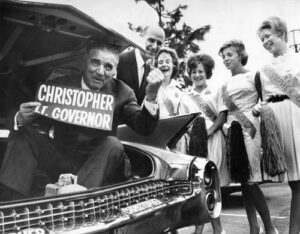
In his oral history, longtime Republican politician and former Mayor of San Francisco from 1956–1964, George Christopher, remembers seeking the crucial aye vote of the fifth and still undecided Contra Costa County supervisor, Joe Silva. Silva had been under pressure from his constituents to vote no, because they would not directly benefit from the commuter rail but would bear the high price tag. Without Silva’s vote, the eventual passage of the measure in November and the $792 million bond issue may have been set back by years. According to Christopher, “The formation of BART is actually one of the funniest things that ever transpired,” involving a pre-dawn meeting and donuts.
I called him and I said “Supervisor, you’re the important man here. Now what are we going to do about this? All I’m asking is that you put it on the ballot and let the people decide whether they want it or not…. I said, “What time shall we meet?” He said, “Five o’clock in the morning.”… Sure enough we got up at four o’clock in the morning and we went over to Contra Costa County and finally found this restaurant. It turned out to be a little donut shop with no tables, no tables whatever, and we all sat around the counter. Here were all the teamsters, the truck drivers listening to every word we had to say…. I don’t know how many donuts we had, but we certainly filled ourselves.
Many hours and donuts later, Christopher had earned Silva’s crucial “yes” vote in support of the regional rail system. Christopher’s oral history is part of the Oral History Center’s “Goodwin Knight-Edmund G. ‘Pat’ Brown, Sr. Oral History Series,” which covers the California Governor’s office from 1953 to 1966, and is a gold-mine of fascinating anecdotes on city planning and transportation issues during that crucial decade.
Even before the bond issue was put on the ballot and approved in 1962, a consequential battle for regional power over transportation, including BART, was fought, ultimately resulting in a victory for local influence in this regional system. This battle was reflected in the approximately three-year long struggle between the Golden Gate Authority (GGA) and its younger competitor, the Association of Bay Area Governments (ABAG), for control over the planning and operation of transportation infrastructure in the region. Several oral histories from the Oral History Center discuss the importance of ABAG, which refers to itself as “part regional planning agency and part local government service provider.” In the oral history titled “Author, Editor, and Consultant: A Participant from the Institute of Governmental Studies,” Stanley Scott, a research political scientist at UC Berkeley, explains:
It came more from the large business interests, the Bay Area Council, with Edgar Kaiser being the chief proponent and front man, I guess you’d say, to create a Golden Gate Authority. That would incorporate the ports, the airports, and the bridges, the bridges being brought in essentially because they were very profitable organizations. So that one kind of came in, you might say, from the side, but at the same time, also involving regional restructuring.
This really upset the cities and counties, and quite a few others. A lot of people were concerned about it. A lot of people were concerned about just latching on to the bridges and tying them in with the airports and seaports. What are we going to do about all the other transportation problems? There was a great deal of concern.
It also exercised cities and counties that just did not want a major authority coming in from off the wall, so to speak. They began organizing themselves, and that was, in part, the genesis of ABAG. It was not the only reason for ABAG’s creation, but it provided substantial push in that direction. It had a lot to do with it. It scared the local people. That would have been in ’58, ’59, and ’60, that the Golden Gate Authority idea was kicked around. It was over a period of at least two years, and it could have been three, before it finally bit the dust.
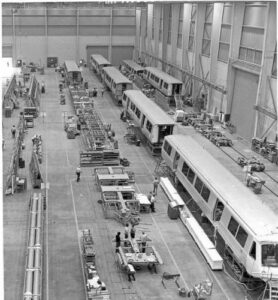
T.J. Kent also addresses this theme about local influence and power sharing — with a focus on the role of ABAG — in his oral history, “Professor and Political Activist: A Career in City and Regional Planning in the San Francisco Bay Area.” Kent was a prominent city planner under San Francisco Mayor Roger Lapham in the 1940s, a deputy mayor for development under Mayor John Shelley in the 1960s, served on the Berkeley city council in the 1950s, and was a founder of UC Berkeley’s Department of City and Regional Planning.
According to Kent, former Mayor George Christopher opted to keep San Francisco out of ABAG because he felt that San Francisco was too important a player in the region to enter into an equal-representation regional government. His successor, Mayor John F. Shelley, reversed that policy, bridging the way to cooperation between the Bay Area’s largest city and the influential agency.
Shelley, with the board of supes [supervisors] backing him, he brought San Francisco into ABAG and appointed me as his deputy on the ABAG executive committee. I also served as the mayor’s deputy on the ABAG committee on goals and organization….The Committee prepared the regional home rule bill that was adopted by ABAG in 1966… It called for a limited function, directly elected, metropolitan government. That’s the key report.
Indeed, the publication of the Regional Home Rule and Government of the Bay Area report marked a huge milestone in the actualization of BART. ABAG, which was granted the authority by the State of California in 1966 to receive federal grants, included BART in the four elements of its metropolitan plan. Kent explains:
The first is the central district, enlarged and unified and focused in San Francisco; the second is a regional, peak-hour commuter transit system, which is BART and AC transit, plus the other transit systems serving San Mateo County, San Francisco and Marin and Sonoma counties; third is the open space system, to keep things from sprawling and for basic environmental reasons; and the fourth was comprised of the region’s residential communities, which shouldn’t get too dense, too overbuilt.
ABAG’s ability to receive and use federal money would prove vital to BART’s construction and continued operation. Furthermore, city and county representation on ABAG’s board — as opposed to zero locally elected officials in the defunct Golden Gate Authority — meant that cities likely had more of a say in the planning of BART than they would have had under the administration of the GGA.
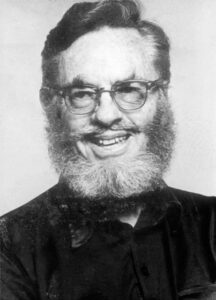
Kent, then a Berkeley city councilmember, helped write the ABAG bylaws that balanced regional and local power. Kent believed in the importance of assigning enough power to regional agencies and districts like ABAG and BART, while also maintaining local autonomy. According to Kent — who throughout his oral history stresses the need to protect home rule wherever possible — counties that opted to stay in the Bay Area Rapid Transit District sometimes felt that the District was too restrictive or overbearing. But as a regional representative government with limited authority, conflicts were eventually solved. Kent remembers the back-and-forth between BART and Berkeley prior to the bond issue passing in 1962.
But those [counties] that were left in [the District], there were major battles in the BART legislation because the BART legislation had to give that agency that power and right. I was on the Berkeley council at the time and the battles were serious. There were many things that BART was required to do in consulting the cities and counties before the bond issue was proposed and voted on in 1962 and even after, which I think was good. They required BART to deal with Berkeley as an equal when Berkeley said, “We think—.” Berkeley got tremendous concessions from BART before the bond issue. You may not realize it, but the initial 1956 BART plan for the Berkeley line had it elevated all the way through downtown. Berkeley fought back before the bond issue vote of ʼ62 and got the middle third put underground.
Those counties that decided to stay in the District and cooperate with BART during its construction had a say in the decision-making process. Perhaps due to that fact, the 1962 district-wide bond issue surpassed the required 60% approval threshold, a result that came as a surprise to many political experts. Litigation and negotiations ensued with cities and counties across the Bay Area in the years that followed. But without the initial bond issue, BART could not have even begun construction.
Mary Leary observed that the impetus to create a regional, commuter rapid transit system — as well as the process of planning BART — did much to encourage local participation in politics. Even though ABAG was a regional entity with certain powers over local governments, Leary says that the agency allowed local governments a say in BART’s planning.
I think it was not unrelated that during this same era of local sharing in BART plans on a regional basis the Supervisors Association and the League of California Cities together launched ABAG, Association of Bay Area Governments, a voluntary group of cities and counties to discuss regional problems. It did not become a real regional government. In fact, I always felt it was created by those two groups to thwart moves towards regional government and to make sure cities and counties maintained their own strong voices. But it has been a significant forum and I think cooperation of the various governments around the Bay in planning BART gave it a good start. Interestingly, when planning got underway for where BART’s lines should run and stations should be, this became the first regional planning ever undertaken and local communities could see as some did that they were planning a sewer outfall just where the next-door neighbor town was planning a beach resort, that sort of thing.
In her oral history, Leary also noted a change in public perspective about public transit — away from the idea that no one would visit San Francisco if they couldn’t drive, to voters actually rejecting federal funds for a freeway connecting the Golden Gate and Bay bridges — and the relationship of BART to that.
Anyway, there was a good deal of political pride in the area that they had shared in developing BART from the very start, and it was part of the system’s success. Most other cities sat back and waited for Washington to provide funds for transit. Los Angeles never could get that much regional support. Of course, about that same time San Francisco was so supportive of the transit idea it rejected federal money for a freeway connection between the Golden Gate Bridge and the Bay Bridge. That really stirred a lot of national attention, saying “no” to millions or maybe billions.
Those interested in exploring the history of BART further, or learning more about the central themes of its history — local and regional government power sharing in the Bay Area, effective organization of regional governing bodies, and local participation in city planning, to name a few — can find much more in OHC’s numerous projects and individual interviews. Search by name, keyword, and several other criteria from the OHC home page.
William Cooke is a fourth-year undergraduate student majoring in Political Science and minoring in History. In addition to working as a student editor for the Oral History Center, he is a reporter in the Sports department at UC Berkeley’s independent student newspaper, The Daily Californian.
About the Oral History Center
The Oral History Center of The Bancroft Library has interviews on just about every topic imaginable. You can find the interviews mentioned here and all our oral histories from the search feature on our home page. Search by name, keyword, and several other criteria. We preserve voices of people from all walks of life, with varying political perspectives, national origins, and ethnic backgrounds. We are committed to open access and our oral histories and interpretive materials are available online at no cost to scholars and the public. Sign up for our monthly newsletter featuring think pieces, new releases, podcasts, Q&As, and everything oral history. Access the most recent articles from our home page.
Related Oral History Center Projects
Covering the years 1953 to 1966, the Oral History Center (then the Regional Oral History Office) began the Goodwin Knight-Edmund G.Brown, Sr., Oral History Series of the State Government History Project in 1969. It covers the California Governor’s office from 1953 to 1966 and contains 84 interviews with a diverse set of personalities involved in Californian public administration. Topics include but are not limited to the rise and decline of the Democratic party, the impact of the California Water Plan, environmental concerns, and the growth of federal programs. This series includes the multivolume “San Francisco Republicans,” which includes the oral history of George Christopher, “Mayor of San Francisco and Republican Party Candidate.”
The San Francisco-Oakland Bay Bridge Oral History Project, launched in May of 2012, is a collection of 15 interviews that cover the construction of the Bay Bridge, maintenance issues, and the symbolic significance of the bridge in the decades after its construction. The majority of interviewees in this project spent their careers working on or around the bridge as architects, painters, toll-takers, engineers and managers, to name a few.
The California Coastal Commission Project traces the development of the only California commission voted into existence by the will of the people, from the campaign for Proposition 20 that created the agency in 1972 to the various development battles it confronted in the decades that followed. These interviews document nearly a half century of coastal regulation in California, and in the process, shed new light on the many facets involved in environmental policy.
Listen to the “Saving Lighthouse Point,” podcast, a collaboration between the OHC and the Bill Lane Center for the American West at Stanford University. “Saving Lighthouse Point” tracks the successful effort by citizens of Santa Cruz, with the support of the California Coastal Commission, to block the development of a bustling tourist and business hub on one of the last open parcels of land in the city.
Related Resources from The Bancroft Library
City and regional planning for the Metropolitan San Francisco Bay area, Kent, T. J., 1963. Bancroft Library/University Archives, Bancroft ; F868.S156K42
Open space for the San Francisco Bay area; organizing to guide metropolitan growth, Kent, T. J., 1970. University of California, Berkeley. Institute of Governmental Studies. Bancroft Library/University Archives. Bancroft ; F868.S156.57.K4
Regional plan, 1970–1990 – San Francisco Bay region, Association of Bay Area Governments, 1970. Bancroft Library/University Archives. Bancroft Pamphlet Double Folio ; pff F868.S156.8 A82
The BART experience: what have we learned? Webber, Melvin M.; University of California, Berkeley. Institute of Transportation Studies. 1976. Bancroft Library/University Archives. UC Archives ; 308m r42 W372 b
From the Archives: Frank Inami
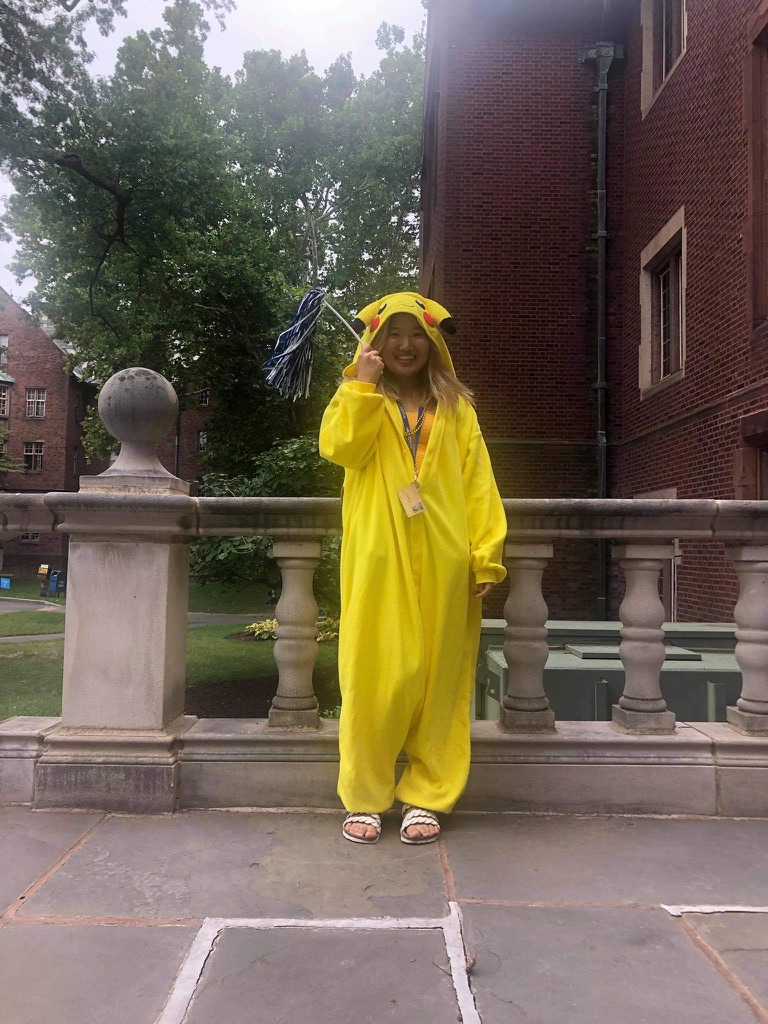
Sari Morikawa is an intern at the Oral History Center (OHC) of The Bancroft Library at UC Berkeley. She is a Mount Holyoke College history major with a keen interest in American history. Sari is being mentored by interviewer/historians Amanda Tewes and Roger Eardley-Pryor.
Reading Frank Inami’s oral history made me wonder about the persecution of Japanese Americans and the surprisingly recent freedoms of American citizens to marry whomever they love. Inami recorded his oral history in 2013 and 2014 with David Dunham and Candice Fukumoto as part of the Oral History Center’s Japanese American Confinement Sites and World War II American Home Front Oral History Projects.
Frank Inami, a Nisei Japanese American (second-generation Japanese American), was born in 1921 in the City of Madera in the Central Valley of California. Inami grew up on a vegetable farm and began attending UC Berkeley in 1939. During World War II, Inami’s studies at Berkeley ended prematurely when the US government unjustly imprisoned him and his family in the Fresno Assembly Center, and the Jerome and Rohwer detention camps in Arkansas due to their Japanese heritage. Inami eventually left the prison camp to attend Illinois Tech and study electrical engineering. After experiencing ups and downs in college and incarceration centers during World War II, he later volunteered in the Military Intelligence Services. After further service during the Korean War, Inami worked as an electrical engineer at Lawrence Livermore National Laboratory.
For me, as an international student from Japan who is studying in the United States, the main highlight of Frank Inami’s interview was his experiences of incarceration at the Fresno Assembly Center and Jerome and Rohwer prison camps, and his postwar transition back to the West Coast. One thing that struck me about Inami’s interview is his description of how rumors became a big part of how imprisoned Japanese Americans collected information and interacted with other people. Under the circumstances where no prisoners had clear information, rumor mills were necessary to network with other prisoners and form a clearer sense of what was happening within the prisons as well as life outside of the centers.
I also found especially intriguing Inami’s stories about anti-miscegenation and the taboo about interracial dating during World War II. Inami had a classmate back in elementary and high school who was European American. This classmate didn’t like Inami and often teased him by saying, “Frank can’t marry a White; White can’t marry Japanese,” and, “I don’t want a minority” in the classroom. Concerns about interracial marriage also appeared in Inami’s parents’ perspectives of marriage and dating. His mother avidly believed that “racial differences” would not allow for a successful marriage, while his father considered white women to be ruthless marriage partners.
Inami’s interview made me wonder about how much influence the prevalence of racism and anti-miscegenation laws have had in recent American history and the ways they might have impacted many peoples’ notions of marriage and dating. Until the Supreme Court ruled in the landmark court case Loving v. Virginia in 1967, many states codified anti-miscegenation laws and prevented interracial marriages. Even California’s ban on interracial marriage, about which Frank Inami recalled being taunted, was not struck down until 1948 in Perez v. Sharp. For me, these issues about acceptable marriage partners connect to themes of belonging, identity, and community in the United States. This year marks the 55th anniversary of Loving v. Virginia. Since this court case later impacted some basic rights, such as same-sex marriage (Obergefell v. Hodges), it plays a big part in US Constitutional Law. Yet, on the personal level, I see some instances where anti-miscegenation is still in effect. For example, some people jokingly told me that they didn’t want to date folks from other racial groups or only wanted to date “Americans.”
It’s 2022; yet, it seems to me we still live with the specter of anti-miscegenation laws and racist notions of romantic partnership. For instance, after the Supreme Court overturned Roe v. Wade earlier this summer, some advocates for equal rights have been concerned about the possibility of overturning Loving v. Virginia. Overturning that legal precedent would not only limit Americans’ civil liberties to marry whom they wish, it would also impact cultural notions of belonging and identity in the United States.
Frank Inami’s firsthand accounts about life in the mid-twentieth century made me think about how racially discriminatory laws and practices may have influenced contemporary values on marriage and dating. Most importantly, his oral history made me reckon with the evolving meanings of belonging and identity in the United States.
Compared to other oral history interviews I’ve read about Japanese American incarceration during World War II, Inami’s experience was more privileged than some. He luckily stuck with his family throughout the incarceration (the War Relocation Authority often cut family ties by sending relatives to different camps). He later left the camp voluntarily to study electrical engineering and eventually had a successful career at the Lawrence Livermore National Laboratory. And yet he also experienced huge personal and professional setbacks in his life. Inami’s interview taught me it is possible to keep moving forward despite unprecedented obstacles and heartbreaks.
Find Frank Inami’s interview and all our oral histories from the search feature on our home page. You can search by name, key word, and several other criteria.